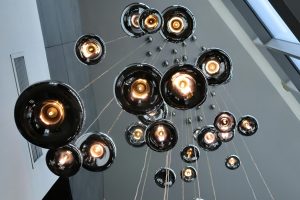Holographic Brake Lights: 3D Warnings to Prevent Rear-Enders
Imagine driving on a busy highway, heading towards your destination when suddenly, the car in front of you hits the brakes abruptly. Your heart races as you try to react quickly to avoid a rear-end collision. Unfortunately, this scenario is all too common and can result in severe injuries and even fatalities. But what if there was a way to prevent this from happening? Enter holographic brake lights – a new technology that could revolutionize road safety and prevent rear-enders. In this article, we’ll explore the world of holographic brake lights and how they could be the solution to reducing accidents on the road.
The Problem of Rear-End Collisions
According to the National Highway Traffic Safety Administration (NHTSA), rear-end collisions account for nearly 30% of all car accidents in the United States. These types of crashes occur when a vehicle crashes into the one in front of it, and they can happen for various reasons, including distracted driving, speeding, and tailgating. Rear-end collisions can have serious consequences, including whiplash, head and neck injuries, and even death. In addition to physical harm, they can also result in costly repairs and insurance claims for both parties involved.
How Holographic Brake Lights Work
Holographic brake lights work by projecting a 3D image of a vehicle’s brake lights onto the air just above the car. This image gives the driver behind a more accurate depiction of the distance and speed of the vehicle in front, allowing them to react faster and more safely. The image is visible from all angles, making it easier for drivers in adjacent lanes to see as well. These brake lights use technology similar to a heads-up display (HUD) in fighter jets, but instead of displaying flight information, they show the status of the vehicle’s brakes.
The Benefits of Holographic Brake Lights
The primary benefit of holographic brake lights is in preventing rear-end collisions. With a clearer picture of the distance and speed of the vehicle in front, drivers can react faster and brake more effectively. This technology can also reduce the risk of pile-ups, as drivers can see the brake lights of the cars in front, even if they are obstructed by larger vehicles.
Additionally, holographic brake lights have the potential to improve road safety in other ways. For example, they can help reduce tailgating by displaying a warning message, such as “maintain safe distance,” on the projection when a vehicle is too close behind. They can also assist in reversing and parallel parking by projecting images of the vehicle’s rear onto the ground, making it easier for the driver to see obstacles.
The Future of Holographic Brake Lights
While holographic brake lights are still in the early stages of development, several companies are working on perfecting the technology. Some are even testing it on public roads, with positive results. The goal is to eventually have these brake lights as a standard feature in all vehicles.
In addition to improving road safety, holographic brake lights could also have a positive impact on the environment. Since drivers will be able to stop more efficiently, it can reduce traffic congestion and carbon emissions from idling vehicles. It can also save fuel by minimizing unnecessary braking and accelerating.
In Conclusion
The introduction of holographic brake lights could change the way we think about road safety and help prevent rear-end collisions. With their ability to provide faster and clearer warnings to drivers, they have the potential to save lives and reduce the number of accidents on our roads. As this technology continues to develop, we can look forward to a safer and more efficient driving experience in the future.











